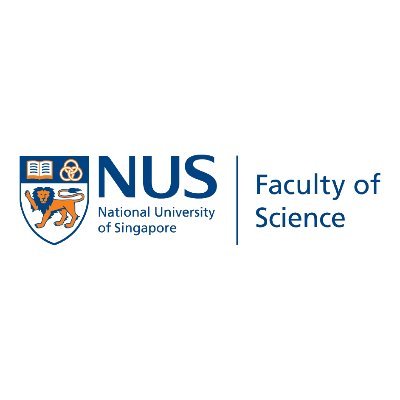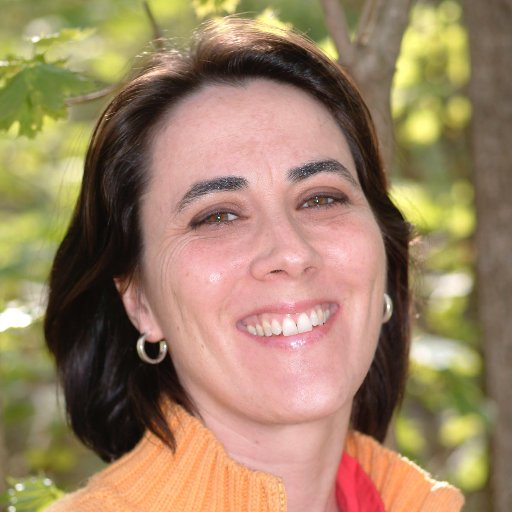
FOS Research
@ResearchFoS
Followers
320
Following
0
Media
76
Statuses
399
Showcasing the amazing research at Faculty of Science, National University of Singapore.
Singapore
Joined March 2021
NUS scientists have discovered a simple DNA “switch” that helps tropical butterflies adjust the size of their wing eyespots in response to seasonal temperatures, shedding light on the evolution of environmental sensitivity. https://t.co/bGTNeLTXN8
0
2
3
Atom-swapping in a saturated heterocycle? We report a photocatalytic transmutation strategy in @Nature that exchanges O within an oxetane for N, S, C & even dual atoms, simplifying access to a variety of non-aromatic cyclic pharmacophores & enabling late-stage editing of complex
8
50
251
Near-100% spontaneous rolling up of polar van der Waals materials @NatureMaterials. Congrats Prof Li Zejun @SoutheastUni and his team! Grateful to be part of this collaboration @NUSResearch
https://t.co/WWXSPSU7ZC & https://t.co/lcnFuyU7Xa
0
2
35
NUS researchers have pioneered a photocatalytic atom-swapping transformation that converts oxetanes into a variety of four-membered saturated cyclic molecules, which are key scaffolds in medicinal chemistry. https://t.co/fF36lV0pLS
0
2
21
NUS researchers have successfully applied cryo-electron microscopy to unveil the molecular structures of critical protein machines that transport lipids and maintain the outer membrane barrier of Gram-negative bacteria. https://t.co/vMfe1a6eQ2
https://t.co/hl1TegxoZc
0
0
1
⚡ Double the impact, double the excitement! ⚡🎉 Thrilled to announce our group's back-to-back publications in JACS! 🚀 Proud to share our latest progress in precision polymer synthesis and grateful for the team's hard work and collaboration. @JiaqiHan97 @Jia94749480 Check out
7
24
134
NUS researchers have observed a doping-tunable charge density wave in a single-layer semiconductor, Chromium(III) selenide (Cr2Se3), extending the CDW phenomenon from metals to doped semiconductors. https://t.co/o1hG1R3Ker
0
0
0
Prof Liu Xiaogang from the NUS Department of Chemistry has been honoured with the University Research Recognition Award. https://t.co/SPYBvHIU7p
0
0
3
Assoc Prof Koh Ming Joo from NUS Department of Chemistry has been named an Asian Young Scientist Fellow in recognition of his achievements in base metal-catalysed alkene/alkyne functionalisations and glycosyl radical functionalisations. https://t.co/eLzim8CdyA
0
0
9
Congratulations to Assoc Prof Lu Jiong from NUS’ Department of Chemistry and the Institute for Functional Intelligent Materials (I-FIM) on receiving the Advanced Science Young Innovator Award! https://t.co/GVbel1zlg9
science.nus.edu.sg
Congratulations to Assoc Prof Lu Jiong from NUS’ Department of Chemistry and the Institute for Functional Intelligent Materials (I-FIM) on...
0
1
5
NUS pharmaceutical scientist in a collaborative effort with the University of Tokyo, Japan have developed a method that can measure the kinetic efficiency of an enzyme against more than 200,000 potential peptide substrates in a single experiment. https://t.co/foRDfHQWMw
0
0
1
NUS researchers have devised a method to safely and temporarily “switch off” and then “turn on” ribonucleic acid (RNA) inside cells. This strategy could potentially open new avenues in more precise RNA-based therapeutics and gene editing. https://t.co/Fu2MbrW5YP
onlinelibrary.wiley.com
This work presents a redox-responsive strategy for precise RNA control via postsynthetic 2′-OH acylation. These introduced disulfide-containing acyl groups can be selectively cleaved upon exposure...
0
1
3
Measuring the localization of a drug and its release in nano drug delivery is a challenge. In our latest publication, we measure what others assume. Congrats, Namrata, Yan, Flavio, Roberta, Alberto & Steffen! Read the full story at: https://t.co/MJzrpaZWRs
#TheWackerLab #NUS
0
2
3
Our work on De-saturation of #SingleAtomCatalysts for accelerating propargylic substitution reactions is out today in #AdvancedMaterials! @NUSResearch
https://t.co/lV3UpG3qkR
0
3
23
NUS researchers have engineered self‑assembling peptides that trap fast‑moving Gram-negative bacteria, preventing their escape and helping to control infection. https://t.co/cBjOUDfkZw
onlinelibrary.wiley.com
From Sequence to Function: Modifying the side strands of β-hairpin peptides with aromatic or negatively charged residues enables the tuning of their self-assembly to create bacteria-specific nanone...
1
0
1
NUS chemists have developed innovative materials that can harness both singlet and triplet excited states for efficient, metal-free photocatalysis. https://t.co/PULN4D3N7Z
nature.com
Nature Materials - A strategy with donor–acceptor covalent organic frameworks enhances photocatalysis by harnessing both singlet and triplet states, enabling metal-free, co-catalyst-free and...
0
1
9
High-precision proton beam generation using ultraclean monolayer amorphous carbon @NatureNano @NUSingapore , with teams from Xiao Cheng Zeng @CityUHongKong , and Xiaoxu Zhao @PKU1898. Congrats Huihui Lin, everyone involved!📄 https://t.co/znbX8uAh0i 🔗 https://t.co/qFVFiy291d
0
6
38
Here is a very detailed examination on how pigmentation in the cuticle of a butterfly wing scale changes the density and refractive index of chitin and, thus, also alters structural color.
0
6
12
🌀🌊🔥 Refuge Trifecta! – this new paper by our PhD student Joel Tan shows how intertidal snails (Nerita undata) seek out pits to escape from heat, waves, and predators.🐌
0
4
6
NUS chemists have synthesised a new class of carbon nanostructures: fully π-conjugated, pentagon-embedded non-alternant carbon nanobelts (CNBs), opening avenues for next-generation organic semiconductors and quantum materials. https://t.co/xWDtOvwste
nature.com
Nature Synthesis - The synthesis of fully π-conjugated, pentagon-embedded non-alternant carbon nanobelts is realized using an iterative Diels–Alder reaction followed by deoxygenative...
0
1
20











